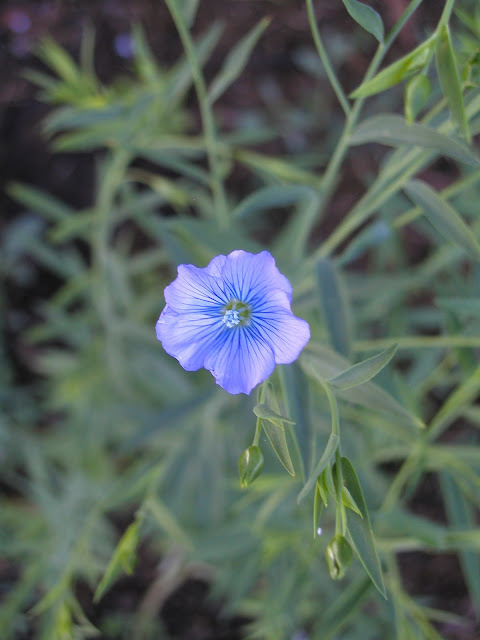 |
| Dainty blossom of the flax plant. |
 |
| Flax seeds. |
In the past several years, flax seed meal has been gaining popularity as a food supplement packed with Omega 3 oils. The shiny, flat, ovate seeds can be eaten whole or ground as meal and added to other foods. This is one food supplement that I personally use on a daily basis. The benefits are far reaching but for starters, research is finding it to be a systemic anti-inflammatory, an aid in balancing blood sugar and a great source of fiber. If you are not currently taking Omega 3, you might look into this.
Curious gardener that I am, I planted some of the seeds in my flower garden one spring. By late summer I had some lovely blue-green wispy plants with dainty blue flax flowers. A very nice addition to a cutting garden or bed that needs a 2-3 ft tall filler row late in the season. A seed pod followed the bloom and, not surprisingly, yielded what you see above!
This would be a fun project to share with young children. Be sure to end by whipping up your favorite fresh fruit smoothie reinforced with 2-3 tablespoons of raw flax meal. It will be a thick, satisfying and nutritious treat.
Flower gardening and nutrition meet and you are the winner!
Happy Gardening!
More notes on flax:
Common flax (linum usitatissimum), also known as linseed, is also the source for linseed oil. The boiled oil was used by our grandparents to finish wood. I remember an older relative recommending that a bench be treated with a "nice coat of linseed oil." Common flax is also used in the production of linen. The wispy stems contain long tough fibers that are extracted by a process that leaves just the long fibers. The fibers are then woven into linen fabric known for its durability and beauty.